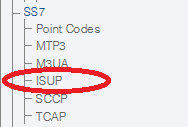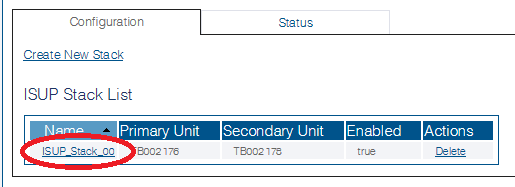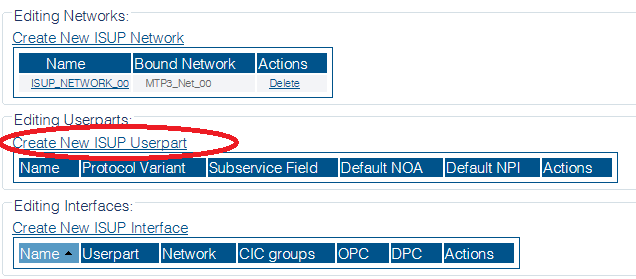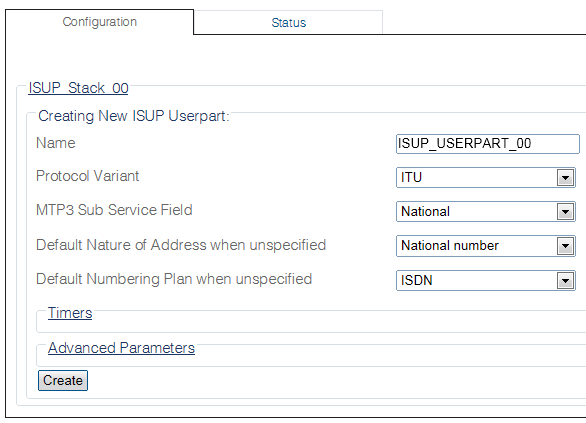Toolpack:Creating an ISUP User Part C
m |
|||
| Line 1: | Line 1: | ||
| − | |||
{{DISPLAYTITLE:Creating an ISUP User Part}} | {{DISPLAYTITLE:Creating an ISUP User Part}} | ||
| + | {| class="wikitable" | ||
| + | |- | ||
| + | |rowspan="3"|This article applies to: | ||
| + | |'''Product''' | ||
| + | |'''Version''' | ||
| + | |- | ||
| + | |Tmedia | ||
| + | |2.9, 2.10, 3.0, 3.2 | ||
| + | |} | ||
| + | |||
Once you have created your ISUP network, you must create a new ISUP user part. | Once you have created your ISUP network, you must create a new ISUP user part. | ||
Latest revision as of 13:43, 25 November 2020
| This article applies to: | Product | Version |
| Tmedia | 2.9, 2.10, 3.0, 3.2 |
Once you have created your ISUP network, you must create a new ISUP user part.
The user part is the container for the multiple ISUP interfaces. One user part is required for each protocol variant. A user part can be seen as a protocol variant that a host application wants to use on the SS7 network.
Multiple ISUP user parts can be instantiated within a single ISUP protocol layer. This allows a user application to interface with multiple SS7 ISUP protocol variants at the same time. In addition, only one ISUP user part is required for a specific variant as it can be assigned to multiple ISUP networks.
To create an ISUP user part:
1- Click ISUP in the navigation panel.
2- Select the ISUP stack
3- Click Create New Isup Userpart in the ISUP stack configuration window:
4- Configure the new ISUP user part:
- Enter a name for the user part
- Select a protocol variant (depending on location)
- Select an MTP3 sub service field (the same that was previously set for MTP3)
- Select an address indicator type
- Select a Numbering Plan
- Click Create
5- Verify that the "IsupUserpart was successfully created" message appears
Path
/configurations/@[configuration_name]/isup_stacks/@[isup_stack]/isup_userparts/@[isup_userpart]
Parameters (text)
/configurations/@[configuration_name]/isup_stacks/@[isup_stack]/isup_userparts/@[isup_userpart] default_nature_of_address = "Not present" default_numbering_plan = "Unknown" name = "@[isup_userpart]" strict_spirou_validation = false sub_service_field = "International" variant = "ITU" /configurations/@[configuration_name]/isup_stacks/@[isup_stack]/isup_userparts/@[isup_userpart]/advanced_parameters allow_call_modification = false allow_group_messages = true allow_pass_on = true cause_release_location = "Private network LU" send_inr_when_no_calling_nb = false user_to_user_info_max_length = 255 /configurations/@[configuration_name]/isup_stacks/@[isup_stack]/isup_userparts/@[isup_userpart]/timers circuit_reservation_ack_timer = "10 seconds" circuit_reservation_timer = "3 seconds" continuity_check_incoming_timer = "20 seconds" continuity_check_outgoing_timer = "20 seconds" exit_timer = "1 minute" explicit_call_transfer_timer = "1 second" final_release_response_timer = "30 seconds" release_response_timer = "30 seconds" t1_timer = "15 seconds" t2_timer = "0 millisecond" t5_timer = "5 minutes" t6_timer = "0 millisecond" t7_timer = "1 minute" t8_timer = "10 seconds" t9_timer = "90 seconds" t27_timer = "4 minutes" t31_timer = "6 minutes" t33_timer = "12 seconds" t34_timer = "5 seconds" t36_timer = "10 seconds"
Parameters (json)
{
"advanced_parameters" : {
"allow_call_modification" : false,
"allow_group_messages" : true,
"allow_pass_on" : true,
"cause_release_location" : "Private network LU",
"send_inr_when_no_calling_nb" : false,
"user_to_user_info_max_length" : 255
},
"default_nature_of_address" : "Not present",
"default_numbering_plan" : "Unknown",
"name" : "@[isup_userpart]",
"strict_spirou_validation" : false,
"sub_service_field" : "International",
"timers" : {
"circuit_reservation_ack_timer" : "10 seconds",
"circuit_reservation_timer" : "3 seconds",
"continuity_check_incoming_timer" : "20 seconds",
"continuity_check_outgoing_timer" : "20 seconds",
"exit_timer" : "1 minute",
"explicit_call_transfer_timer" : "1 second",
"final_release_response_timer" : "30 seconds",
"release_response_timer" : "30 seconds",
"t1_timer" : "15 seconds",
"t2_timer" : "0 millisecond",
"t5_timer" : "5 minutes",
"t6_timer" : "0 millisecond",
"t7_timer" : "1 minute",
"t8_timer" : "10 seconds",
"t9_timer" : "90 seconds",
"t27_timer" : "4 minutes",
"t31_timer" : "6 minutes",
"t33_timer" : "12 seconds",
"t34_timer" : "5 seconds",
"t36_timer" : "10 seconds"
},
"variant" : "ITU"
}
List of Parameters
- Name
- Protocol Variant
- MTP3 Sub Service field
- Default Nature of Address When Unspecified
- Default Numbering Plan When Unspecified



